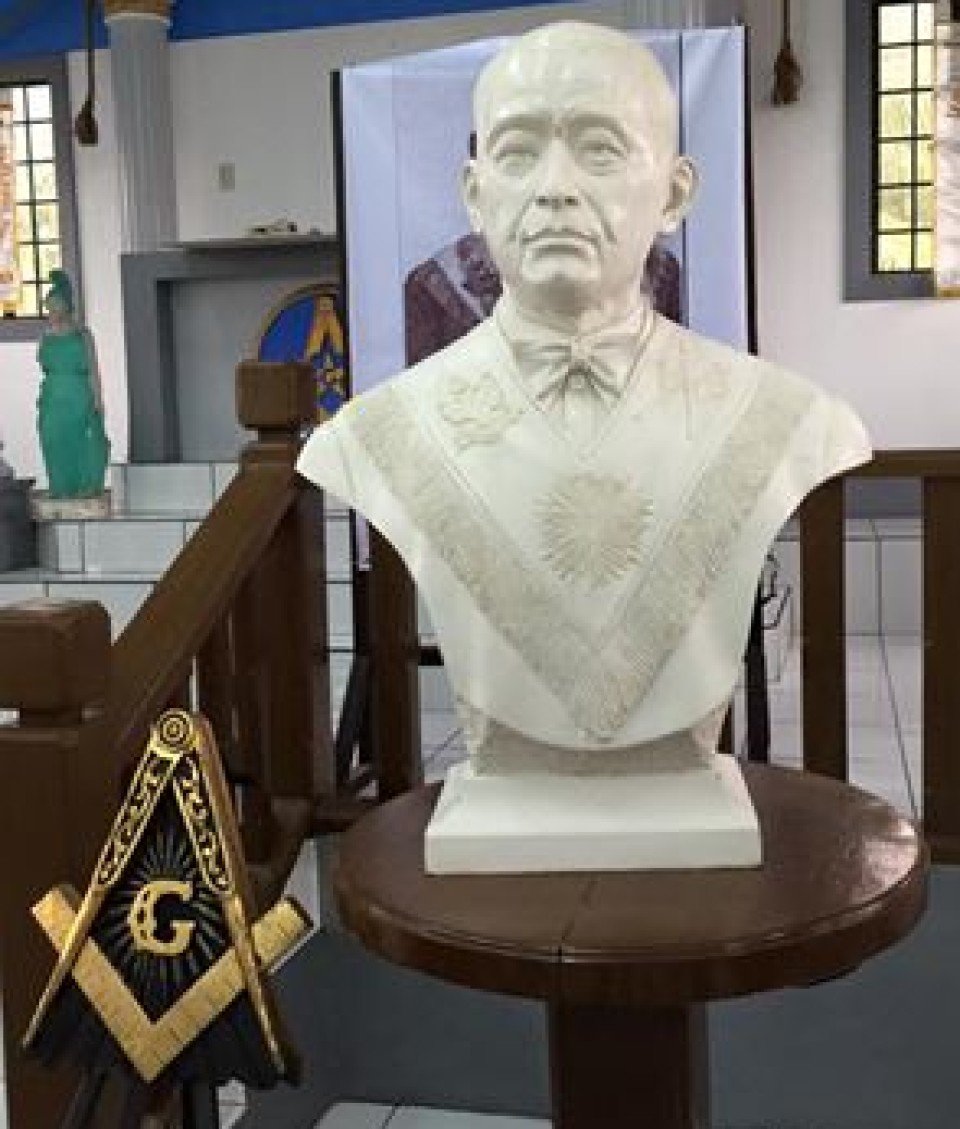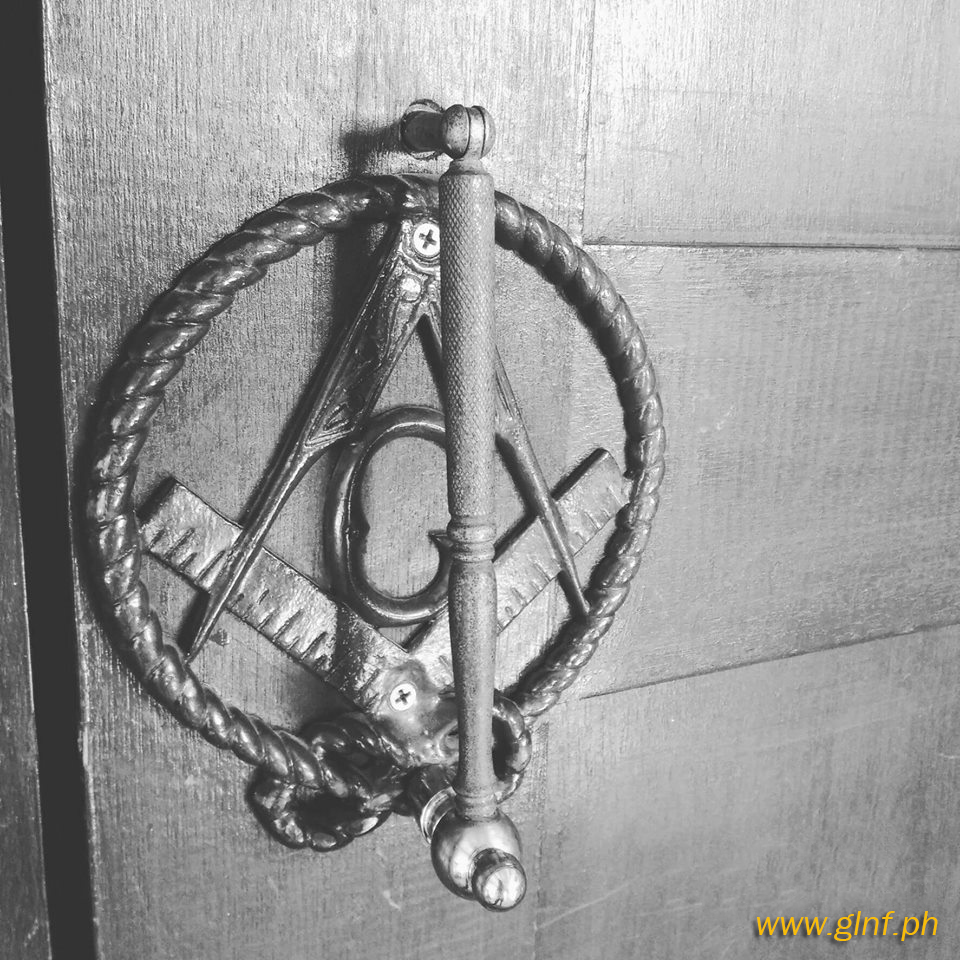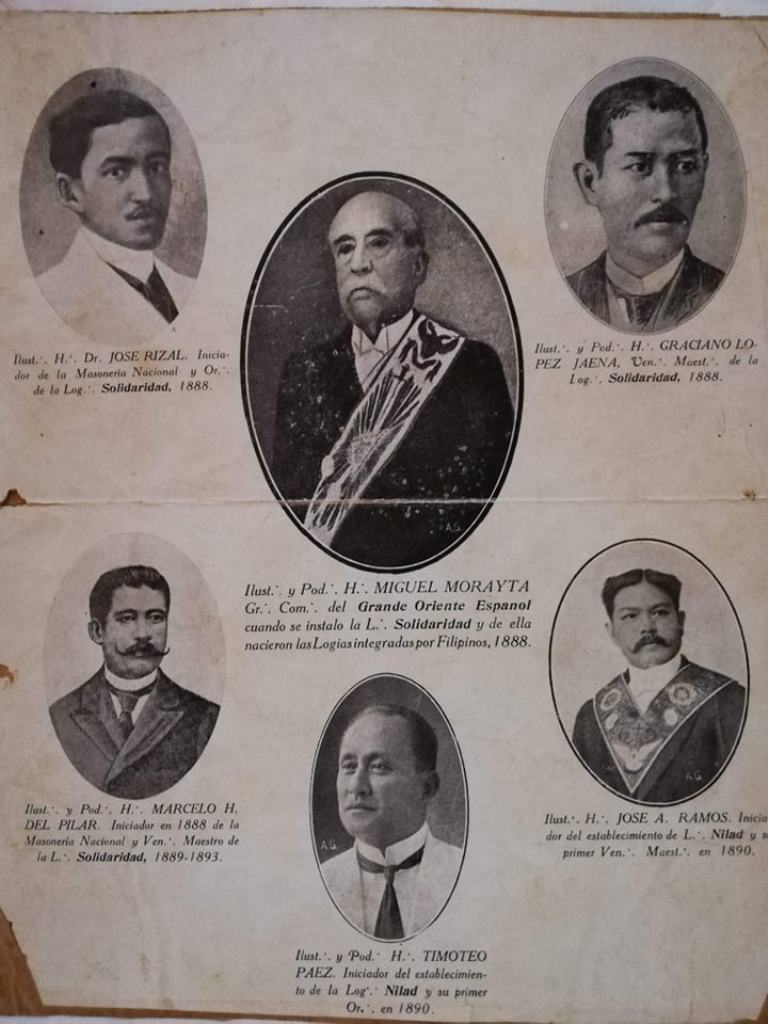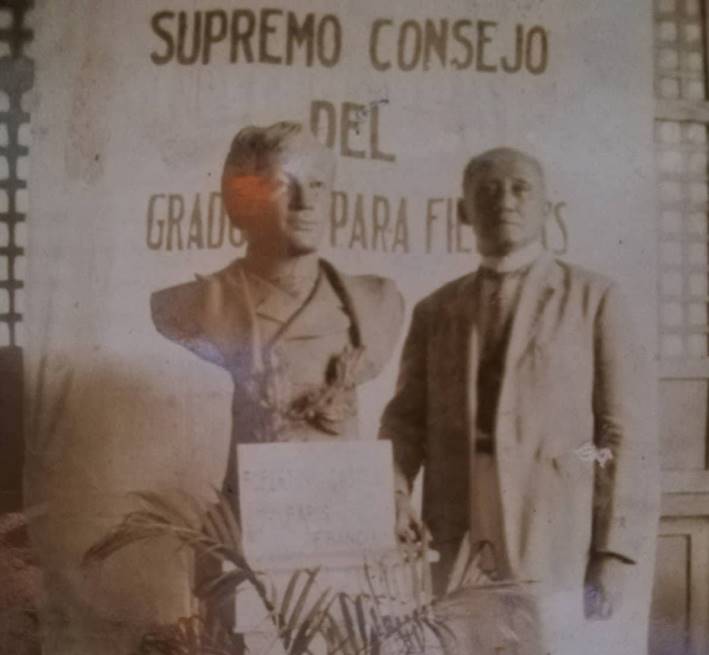The First Speculative Freemasons
From the records of the Masons Company of London concerning its‘accepted members’ we find without doubt the earliest authenticevidence of 17th century Freemasonry in England.
“But, by whatever name it was known in this or another country,Masonry has existed as it now exists, the same in spirit and at heart,not only when Solomon built the temple, but centuries before–before thefirst colonies emigrated into Southern India, Persia, and Egypt, fromthe cradle of the human race.” Albert Pike 1857ce
In this blog I would like to bring to light the names and lives of sixnon-operative Freemasons who worked within the craft for decades longbefore Elias Ashmole was initiated in 1646ce. It my opinion they werethe first recorded Speculative Freemasons.
Robert Freke Gould’s ‘Concise History of Freemasonry’ has been the goldstandard for Masonic research for over 100 years, but even Gould washuman and subject to an occasional error. The problem with Gould makingan occasional error is his work is so well respected that no one everquestions it. His is after all the most quoted source for Masonichistory.
So what do you do when you stumble across an error which changes someof the most basic understanding of who were the first non-operative orspeculative Masons, when this occurred and what documentation do wehave to substantiate it?
On page 111 of Gould’s work, it states “Seven persons were receivedinto the ‘acception’ or Lodge in 1620-21, all of whom were alreadymembers of the company…” , Who were these Seven men and is there wasanything significant about them?
On examining a copy of Edward Conder’s book ‘Records of the Hole Crafteand Fellowship of Masons’ which Gould had used as his source for theinformation but when compared they did not come close to agreeing witheach other!
Conder’s book states; As early as the year 1620 or twenty-one yearsbefore any mention of the society is made by any writers of the 17thcentury, we find in the first years entered in the account book, whichis the earliest document concerning the Guild still remaining in thecompany’s possession, an entry referring to certain gratuities receivedfrom new members in consequence of their being accepted on the livery.
“In the following year occur entries of certain payments made by thesenew members when they were made masons, doubtless by some ancientceremony which survived the troublous period of the Reformation.”
Gould says these men were already members of the company and “werereceived into the ‘acception’ (i.e., the Acception) or Lodge”, butaccording to Conder the records state otherwise. His book includescopies of the minutes which make it quite clear these men were firstAccepted and then Made Masons and not the other way around. He goes onto say the word “accepted” is rarely used throughout the 500 pages ofthe surviving account book. When it is used, it is always used todescribe someone who is admitted into the company upon acceptingMasonry. They did not serve an apprenticeship because, if they had,there would have been no reason to accept Masonry in order to join thecompany.
The words “coming on the Acception” Gould uses are not to be foundanywhere in the records for the year 1620ce or 1621ce provided toConder by the Company of Masons. Nowhere in the records of theWorshipful Company of Freemasons, is there any mention of an‘acception’ (i.e., the Acception) or of a ‘Lodge’ in 1620-21. However,Conder does make the following statement about Speculative Masonry onpage 9:
“This we cannot say for certain, but we can say that as early as 1620and inferentially very much earlier, there were certain members of theMasons Company and others who met from time to time to form a Lodge forthe purposes of Speculative Masonry; and this account given by therecords of the Masons Company concerning its ‘accepted members,’ iswithout doubt the EARLIEST AUTHENTIC EVIDENCE of 17th centuryFreemasonry in England”
Contrary to Gould’s statement, the only occurrence in the records ofthe Masons Company of the word ‘acception’ is found in a 1648ce entrymade in regards to a Warden paying for “coming on the Acception”. By1648ce already have separate evidence of at least two other lodges, onein Chester and one in Warrington, being run by Speculative Masons.
Conder states there could be little or no inducement for persons not inany way connected with the building trade to join this small andcomparatively poor company. Yet a careful reading of the records of theMasons Company which Condor provides us show these six men, not sevenas Gould states, did more than just join, they contributed greatly tothe company for more than a decade.
These men were not operative Masons as clearly indicated in the waythey joined the company by immediately coming on to the livery. Thisshows that as early as 1621ce non-operatives were able to gainadmission into a guild of operative stonemasons by paying a huge sum ofmoney. It is in direct contrast to the normal way an apprentice gainshis freedom of the company. Condor tells us the act of joining on thelivery normally comes years after a man finishes his apprenticeship.More importantly we see here in the earliest extant records of theWorshipful Company of Freemasons there is already in existence a setfee for joining the company by acceptance of Masonry. This factsuggests this practice may have predated 1620ce.
Conder quotes from the existing records the account of six men paying“for their gratitude at their acceptance unto the livery”. Livery isthe second highest standing in the company. According to the records ofthe Masons Company it also requires those being elevated to be able toafford the robes of a Gentleman and to outfit one’s servants in robes.It was an expensive undertaking and not one easily affordable to theaverage craftsman.
So who were these six men? The records identify them as Evan Lloyd,Thomas Preestman, James French, Timothy Townsend, John Hince, and JohnKifford. There is a follow-up entry regarding some of these men being‘made’ Masons in 1621ce. Three of them Hince, Lloyd and French arelisted along with four others, who were presumably apprentices. Thiscould account for Gould’s tally of seven persons.
How expensive was it for a man to join the Masons Company by acceptingMasonry? To get an idea, compare that cost in comparison with the wagesof a Stonemason in the early 1600’s.
At the completion of his apprenticeship a mason would pay one pound,three shillings and four-pence, or about a month’s earnings at Stoneswage scale, to become a Journeyman. To advance to Livery a mason wouldneed to pay an additional fee of nine pounds, almost a full year’searnings. It becomes clear that anyone who can afford to do that werenot simple masons but well to do gentlemen.
So why would six well-to-do gentlemen pay so much to join theWorshipful Company of Freemasons? Conder writes, “There could be littleor no inducement for anyone not in the building trade to join thissmall and poor company”. Certainly in view of the cost, there wouldhave to be a compelling reason for them to do so. The question is whatwas it?
Each of these six men came from long established families. They werenot lords of the Shires or the company records would have recordedtheir titles. So we have six men from established families, not noblesbut able to pay a heavy fee to join the guild. More than likely theywere members of England’s newly created middleclass, the country’sfirst capitalists, descendents of Knights and stewards of nobility whohad become successful merchants and farmers. While they were notqualified by rank to be included in the privileged 10% of titledNobility but probably controlled more wealth than their titledrelatives.
Knowing who these men were and what class of English society theybelonged to identifies them as prosperous but still doesn’t tell us whythey chose to join this small and poor company. What did they expect togain from joining?
The answer might have a lot to do with the social and politicalenvironment in western Europe in the early 1600’s. The transition froma insular country to a worldwide empire would be both cruel and bloody.In the process, a monarch would be executed and another dethroned.
If we look at the literature of the time, William Shakespeare producesplays with definite moral lessons. This type of literature goes back asfar as the Norman Conquest. Stories of Arthur and the Knights of theRoundtable had been told for centuries before the 14th century epic‘The Green Knight’ appeared. It is clear that the search forenlightenment was underway, but literature and the realities of life in17th century England have little in common.
Governments and universities were not open to progressive thought inthe late 16th and early 17th century. The Church, once open to theheliocentric theory of the universe, suddenly collapses inwardsretreating to the Ptolemaic theory propounded in 150 AD which viewsEarth as a stationary center of the universe.
Copernicus’ book De revolutionibus orbium coelestium (On theRevolutions of the Celestial Spheres) is published and placed in hishands the very day he dies in 1543ce. However, it would be printed witha preface written by Lutheran theologian Andreas Osiander stating theheliocentric account of the earth’s movement is a mere mathematicalhypothesis, not an account which contains truth or even probability.
There can be no doubting the rabid fervor of the still powerfulInquisition which brought the greatest inventor, scientist andmathematician of the era Galileo, to his knees. After inventing thetelescope he used it to observe the four satellites of Jupiter. OnlyGalileo’s fame saves him from the stake.
By this time Europe was being ripped apart by a bloody religious warand those who thirsted after knowledge, who wanted to study thesciences and philosophy risked their freedom by discussing their workin public.
It is difficult today to comprehend the level of fear and frustrationexisting in Europe and particularly in England in 1620ce. Scientists,philosophers, and astronomers were forced to work in secret to avoidbeing branded as heretics. Some, like the men who would later form theRoyal Society, met quietly in locations around Oxford. There were fewplaces in England where one could speak his mind in safety.
The harsh realities of early 17th century life belied the stories ofchivalry. There are no declarations of support for the Stuart King inthe existing Worshipful Company of Freemasons records but they didrecord their feelings about the execution of their lawful king. OnJanuary 30, 1649ce there is a note in the records of the company, whichread, “King Charles murdered at Whitehall”.
The age of enlightenment had yet to dawn.
The masons of the 17th century understood that mathematics and geometryare not restricted to the building trades but expand into the fields ofnavigation and astronomy. They were among those who sought knowledge,kept their trade secrets, and by adhering to the ancient charges oftheir craft, each man was committed to the protection and support ofhis fellow mason. These would have been valid reasons why these six menmight have sought the sanctuary offered within the lodge rooms of TheWorshipful Company of Freemasons.
No matter their reasons for joining, these six men left their mark onthe company. Out of the original six, at least three became Wardens ofthe company and two or three, would actually serve as Master. JohnHince served as Warden in 1626ce and in 1628ce while he served asMaster of the company, Thomas Priestman was one of his wardens. Thekings’ architect, Nicholas Stone served with Timothy Townsend as aWarden in 1630ce. Thomas Priestman would be elected Master of thecompany in 1636ce. Lloyd only appears in the records twice, one ofwhich is in connection to being fined for having an argument in thecompany.
By the 1640’s the word “Accepted” had begun to be replaced with a newdescription. Ashmole uses the word “Freemason” in his description ofhis initiation into the society. In Ashmole’s description of thosepresent at the time there is a striking example of the tremendous pullof the growing fraternity of men who would lay aside their religion andpolitics to meet as Brothers. There, in a small room in Warrington in1646ce, with the civil war still raging, Roundhead sat down withRoyalist, Catholic with Protestant; each man trusting the others enoughto risk their life in the pursuit of light, just as six other men haddone 21 years before.
This article is lifted from the Masonic Network














